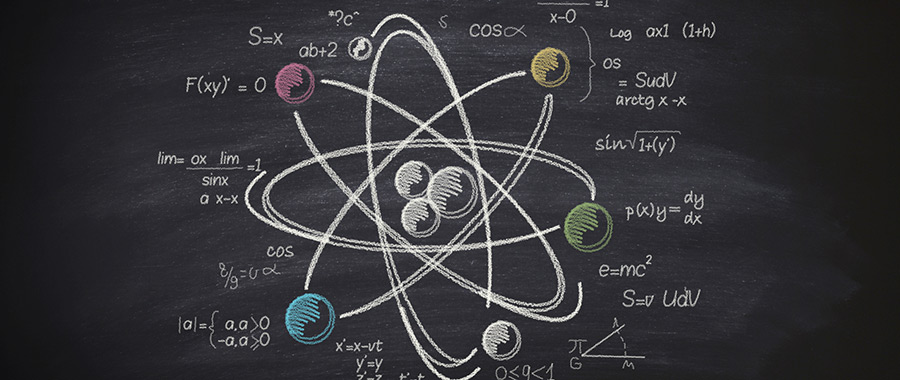In contemplating the intersection of faith and science, a stimulating query arises: Can the language of religion and the language of physics coexist harmoniously, or are they destined to dwell in perpetual discord? The Baha’i teachings offer a distinctive lens through which this intricate relationship can be examined, providing insights that not only celebrate the compatibility of these domains but also challenge us to embrace a more profound understanding of both. The Bahá’í perspective posits that both religion and science are fundamentally interconnected, nurtured by the same Divine source, and that they can complement each other in illuminating the nature of reality.
At the heart of Baha’i thought lies the assertion that religion should be the cause of unity and harmony among humanity. This tenet invites practitioners and observers alike to explore the foundational teachings of the Baha’i Faith, where both the spiritual and material worlds find a place. Bahá’ís believe that both realms have their own lexicon, with religion providing moral guidance and physics elucidating the workings of the universe, yet both are expressions of a greater Truth.
Historically, the relationship between science and religion has been tumultuous, marked by debates and conflicts. However, the Baha’i Faith redefines this struggle not as a battle but as a dialogue. The teachings assert that true science and true religion must ultimately converge on the same truths. Thus, they challenge pre-existing dogmas that champion dualism or opposition. Instead, the Bahá’í writings encourage an understanding that transcends mere tolerance, advocating for an integrative approach where scientific inquiry does not invalidate spiritual belief.
To delve deeper into this topic, it is essential to explore key concepts within the Baha’i teachings that illuminate the interplay between the words of religion and the words of physics.
1. The Unity of Science and Religion
Bahá’u’lláh, the Prophet-Founder of the Baha’i Faith, articulates the harmony that exists between science and religion by emphasizing their complementary roles. Science provides a systematic framework for understanding the material world, while religion answers the profound existential questions regarding purpose, ethics, and morality. Both are indispensable; neither can claim supremacy over the other without losing its essence. This principle fosters an environment wherein scientific discoveries enhance spiritual understanding, and religious teachings ground scientific pursuits within a moral context.
2. The Nature of Reality
Both Baha’i teachings and physics strive to describe the universe, albeit through different vocabulary and methodologies. Physics employs empirical evidence and mathematical models, while spirituality utilizes metaphor and intuitive insight. The Baha’i perspective suggests that both approaches contribute to a richer understanding of reality. The material world, with its laws and phenomena, is seen as a reflection of deeper spiritual truths. Recognizing this interconnectedness encourages individuals to approach knowledge not as fragmented but as an integrated whole.
3. The Role of Human Perception
In the realm of both religion and science, perception plays a pivotal role. Baha’i teachings emphasize that human understanding is inherently limited and subjective. The relationship between observer and observed in physics parallels the way individuals interpret religious truths. This analogy encourages humility in both scientific inquiry and spiritual contemplation. Just as theories in physics evolve with new discoveries, so too can spiritual interpretations grow and adapt in light of new insights or revelations. This fluidity is essential for a dynamic engagement with both domains.
4. Ethical Implications of Scientific Advancement
As we traverse through the advances of modern physics, questions surrounding ethical considerations become increasingly salient. The Baha’i teachings provide guidance on how to ethically navigate scientific progress. The application of scientific discoveries must encompass a vision of justice, equity, and inclusivity, resonating with the spiritual principles laid out in the teachings. True progress is not solely measured in technological advancements but also in the upliftment of humanity. This perspective compels scientists, policymakers, and individuals alike to prioritize the common good in their endeavors.
5. The Necessity for Open-mindedness
The Baha’i Faith encourages an open-minded attitude towards both scientific inquiry and religious belief. Engaging with diverse perspectives fosters a more profound understanding of complex issues. This principle underlines the importance of collaboration between scientists and spiritual thinkers, urging them to participate jointly in discussions that shape societal progress. Embracing a dialogue between competing viewpoints can engender breakthroughs that further the collective aspirations of humanity.
6. The Path to Future Enlightenment
Ultimately, the Baha’i perspective delineates a hopeful path towards future enlightenment, where the integration of science and religion is celebrated rather than contested. By fostering collaboration and mutual respect, humanity possesses the potential to unlock deeper mysteries of existence and enhance its collective well-being. The words of religion and the words of physics, when harmoniously entwined, illuminate a comprehensive understanding of the universe and our position within it.
In conclusion, the Baha’i teachings offer an empowering framework for reconciling the words of religion with the words of physics. Through the exploration of unity, perception, ethical implications, and open-mindedness, adherents are encouraged to navigate the complexities of existence with confidence and clarity. While challenges may arise, the belief in the interdependence of all knowledge serves as a guiding principle, advocating for an enriched dialogue that promotes both spiritual and scientific advancement.
